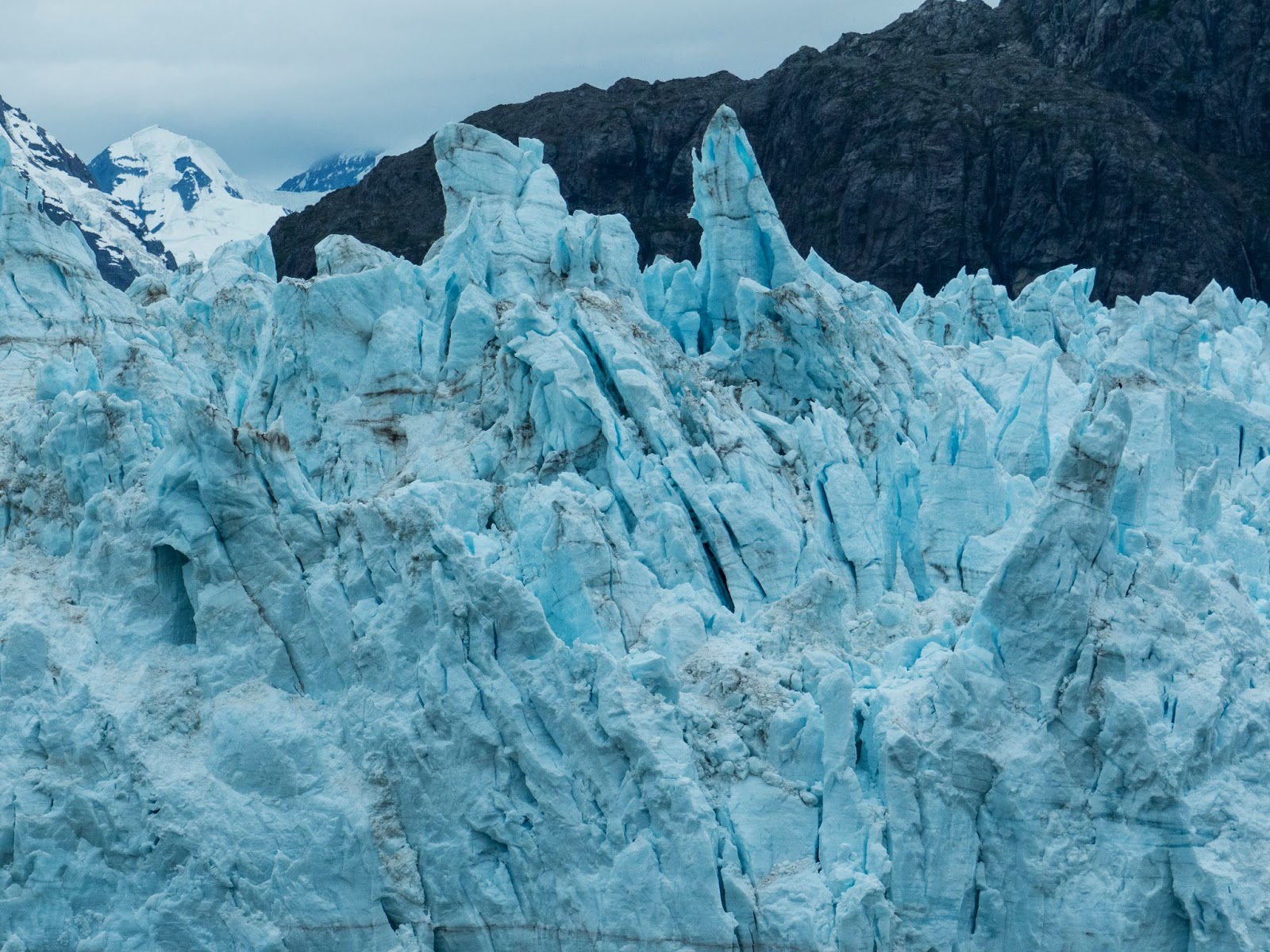Our next Marine Highway stop was in Sitka. On July 14th, we left Petersburg on the M/V Taku
 |
| Petersburg Harbor |
 |
| Sitka Inlet with Cruise Ship |
 |
| Kate Watching for Whales |
We arrived in Sitka early in the morning before the campsites opened, so we parked outside the nearest one to the ferry and slept until it opened at 7 and then continued on with our day.
Sitka itself is a pretty little town with many fishing vessels in its harbor. It is steeped in Russian history with St. Michael's Russian Orthodox Church being at the center of all directions. It is a quiet town until the cruise ships arrive and even at that they have to anchor off shore and not many come all at once. We were only here until noontime on the 16th but we did drive out to the Eagle and Bear Preserves but decided not to go in. We would prefer to see them in the wild and not constrained by cages and and fences. Overall a nice little stop along the way.
We did see many more rubber boots just commonly referred to as their "xrtratuffs" and sometimes called the Southeast Alaska "flip flops" here in Sitka. They wear them with everything from shorts to rain gear!
 |
| Southeast Alaska "Flip-Flops" |
Juneau July 16th- July 20th
We took the high speed ferry from Sitka which took us back up through Peril Strait into Chatham Strait and on into Juneau on Sunday the 16th. We left at 12 noon and we arrived in Juneau at 4:30 pm. We had reserved a campsite at the Mendenhall Glacier National Park Campground which was next to the Mendenhall Lake. We set up the RV and immediately set off to see the Lake, the Skater's Cabin and the Glacier itself. It's amazing how accessible it is.
 |
| Approach to Juneau |
 |
| Lake at Skater's Cabin with Glacier Behind |
Glacier Bay National Park is comprised of 3.3 million acres of mountains, glaciers, forests, and waterways and we were on our way to see the many beautiful sights it holds.
As we picked up speed on the way out of the harbor, we donned yet another layer of clothing...it was cold! From thermals to long sleeve shirts then polar fleeces to wind gear (jackets and pants) including wool crew hats and gloves...and it took all of it to keep us warm on deck. Inside was warmer but then we wouldn't have seen as much.
Along the way to the glaciers we slowed for views of Otters, Orcas, brown bear, eagles nest, mountain goats, puffins, seals, and sea lions.
 |
| Orca Whale |
 |
| Orca Whale |
 |
| Kayakers |
 |
| Puffin |
 |
| Sea Lions |
Along with all of this, the views of the Fairweather and St. Elias Mountain Ranges were incredible.
 |
| Fairweather Range |
 |
| Cruise ship in front of Margerie Glacier |
 |
| Margerie Glacier |
When we arrived at the Margerie Glacier we stayed in place for about 30 minutes hoping to catch it calving. We did see it a few times but nothing dramatic but the "white thunder" it produces while moving and calving is powerful. There were several other glaciers that we passed along the way: Reid Glacier, the Grand Pacific Glacier which comes down from the Canadian border, and the Lamplugh Glacier.
An interesting note is that John Muir not only explored the forests out west, but he also explored Glacier Bay with an inlet being named for him..Muir Inlet and Muir Point. The man really got around!
 |
| Glacial Ice |
 |
| Grand Pacific Glacier |
Our flight back to Juneau was spectacular as the pilot dipped his wings as we went through the mountain passes affording us panoramic views of the Chilkat Mountains.
We had dinner at the Red Dog Saloon which is an original landmark from old time Juneau where Rag Time Hattie used to play the piano in her white gloves and silver dollar halter top. At one point in the territorial days, they would meet a boat with a mule which wore a sign saying, "follow my ass to the Red Dog Saloon." We picked up a bag of "Tim's" potato chips which they serve there and headed home exhausted!
The next day was a little more low key. We went back to the Mendenhall Glacier and hiked out to the Nugget Falls.
In the afternoon, we took the tram up Mount Roberts above Juneau from which we had great views of the harbor, but really wasn't worth the trip for the overall experience. On to the Alaskan Brewery to end our trip to Juneau. Lots to do and I think we did it all!

















































